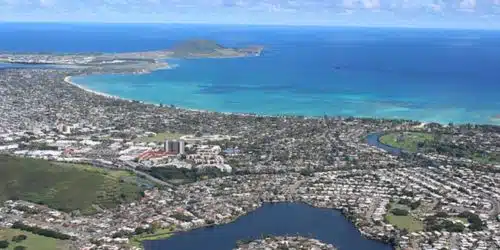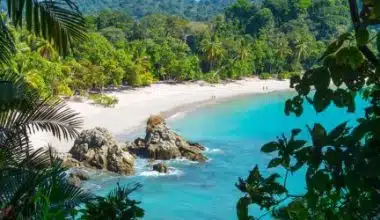To save money on a trip to Hawaii, consider booking accommodations wisely, staying in less touristy areas, and being flexible with travel dates. Consider alternative transportation options like public transportation, biking, or walking, and consider using ride-sharing services. There are several advantages you can take advantage of, like discounts and deals on attractions, activities, and dining options, while planning your next trip. This article will reveal the cost of a trip to Hawaii, the best way to plan a budget trip, and the best places to visit in Hawaii considering other factors like time, duration, accommodation, activities, and transportation.
How Much Is A Trip To Hawaii?
Planning a trip to Hawaii can be exciting, but it can also be exhausting. With so many factors to consider, such as when to go, how far you’re flying, where to stay, what to eat, and what activities to do, that’s why people often ask how much a trip to Hawaii costs. It’s always ideal to research and compare prices, look for deals, and plan to get the best value for your trip to Hawaii.
Costs Associated With Having A Trip To Hawaii
The cost of a trip to Hawaii is as follows:
#1. Flights
The cost of flights to Hawaii can vary depending on the departure location, time of year, and airline. It is best to compare prices and book in advance to get the best deals. On average, round-trip flights from the mainland United States to Hawaii can range from $300 to $800 per person.
#2. Accommodation
The cost of accommodation in Hawaii depends on the island and the type of accommodation chosen. Prices can vary significantly between luxury resorts, mid-range hotels, vacation rentals, and budget accommodations. A hotel room in Hawaii can cost anywhere from $150 to $500 per night, depending on the location and amenities.
#3. Transportation
Once in Hawaii, transportation costs can include car rentals, public transportation, or rideshare services. Renting a car is a popular option for exploring the islands, and prices can range from $40 to $100 per day, depending on the type of car and the rental company.
#4. Food
Dining out in Hawaii can be a memorable experience, but it can also be expensive. The cost of food in Hawaii is based on the type of restaurant and cuisine. You can pay around $15 to $40 per person for a meal at a mid-range restaurant. There are also plenty of affordable dining options available, such as food trucks and local markets.
#5. Activities and Attractions
Hawaii offers a wide range of activities and attractions, including beach activities, hiking, snorkeling, sightseeing tours, and cultural experiences. The cost of these activities can vary, with some being free or low-cost (such as visiting beaches and hiking trails) and others requiring paid admission or fees. It’s best to budget around $50 to $150 per person per day for activities and attractions.
#6. Seasonal Variation
The time of year you choose to visit Hawaii can have a significant impact on the cost of your trip. The peak tourist season in Hawaii is during the winter months (December to February) and summer months (June to August). During these times, prices for flights, accommodations, and activities tend to be higher. If you’re looking to save money, consider visiting during the shoulder seasons (spring and fall) when prices may be more affordable.
#7. Duration of Stay
The length of your trip will impact the overall cost. Longer stays generally require a larger budget for accommodations, meals, and activities. It’s essential to plan your itinerary and allocate funds accordingly.
#8. Miscellaneous Expenses
Other expenses to consider include souvenirs, tips, parking fees, and any additional services or experiences you may choose to indulge in during your trip. Set aside a budget for these miscellaneous expenses, as they depend on personal preferences.
#9. Inter-island Travel
If you plan to visit multiple islands during your trip, you’ll need to factor in the cost of inter-island travel. You can do this using domestic flights or ferry services from Hawaiian Airlines or Maui-Lanai Expeditions, for example. Prices for inter-island flights can range from $100 to $300 per person, depending on the distance and time of booking.
#10. Resort Fees and Taxes
When booking accommodations in Hawaii, some hotels and resorts charge additional daily resort fees, which cover amenities like Wi-Fi, pool access, and fitness center usage. These fees can range from $20 to $50 per night. Hawaii has a Transient Accommodation Tax (TAT) and General Excise Tax (GET), which are added to the cost of your accommodations and can add around 14% to your bill.
#11. Travel Insurance
It is always advisable to have travel insurance to protect against any unforeseen circumstances or emergencies. The cost of travel insurance can vary depending on the coverage and duration of the trip. On average, travel insurance can range from $50 to $200 per person.
#12. Rental Equipment
You might need to hire gear like bicycles, surfboards, or snorkeling equipment if you intend to participate in outdoor activities or water sports. Depending on the item and location, daily rental costs might range from $10 to $50.
Tips On How To Plan A Budget-Friendly Trip To Hawaii
When planning a trip to Hawaii, there are several tips and strategies you can use to save money. Remember, saving money on your trip to Hawaii doesn’t mean sacrificing enjoyment. With careful planning and a bit of research, you can have an incredible Hawaiian experience while keeping your expenses in check.
These are some common tips
#1. Book Alternative Accommodations
Consider booking a rental home or condo instead of a hotel. This can often be more affordable, especially if you’re traveling with a group or staying for an extended period. Look for deals and discounts on accommodations, and consider staying in less touristy areas for lower prices.
#2. Save on Flights
Search for the best deals on flights. Flying on weekdays or during off-peak seasons can often result in lower airfare. Use flight comparison websites and sign up for fare alerts to stay updated on the latest deals.
#3. Consider Alternative Transportation
Renting a car in Hawaii can be expensive. Look for alternative transportation options such as using public transportation, biking, or walking for shorter distances. Also, consider sharing rides or using ride-sharing services to save on transportation costs.
#4. Cook Meals Instead of Eating Out
Eating out for every meal can quickly add up. Consider booking accommodations with kitchen facilities so you can cook some of your meals. Visit local grocery stores and farmer’s markets to buy fresh produce and ingredients at lower prices.
#5. Take Advantage of Discounts and Deals
Look for discounts and deals on attractions, activities, and dining options. Websites like Groupon and LivingSocial often offer discounted rates for various experiences in Hawaii. Research and plan your activities to take advantage of early booking discounts.
#6. Explore Free or Low-Cost Activities
Hawaii offers a wealth of natural beauty and outdoor activities that are either free or have minimal costs. Enjoy the stunning beaches, go hiking in national parks, visit local markets and festivals, or explore historical sites.
#7. Travel During Shoulder Seasons
Consider traveling to Hawaii during shoulder seasons, which are the periods just before or after peak tourist seasons. During these times, prices for accommodations, flights, and activities tend to be lower, and the islands are less crowded.
#8. Plan and Budget for Daily Expenses
It is essential to have a budget and stick to it. Plan your daily expenses for meals, transportation, and activities in advance. This will help you avoid overspending and keep your trip within your desired budget.
#9. Avoid Unnecessary Expenses
Be mindful of additional expenses that can quickly add up during your trip. For example, avoid excessive souvenir shopping and expensive tourist traps. Opt for local markets and shops for authentic and budget-friendly souvenirs.
#10. Pack Snacks And Reusable Water Bottles
Bring snacks and reusable water bottles with you on your daily outings. This way, you can avoid purchasing expensive snacks and drinks at tourist spots. Staying hydrated and having snacks on hand will also help you save money during your adventures.
Best Places To Visit On A Trip To Hawaii
Hawaii comprises several beautiful islands, each with its own unique attractions and charm. When it comes to the best places to visit in Hawaii, it largely depends on your interests and preferences. Each island offers its own unique experience.
Popular destinations to visit on a trip to Hawaii are
#1. Oahu
Oahu is the most populous island in Hawaii and is home to the state capital, Honolulu. It offers a mix of urban attractions and natural beauty. Key attractions include Waikiki Beach, Pearl Harbor, Diamond Head State Monument, and the vibrant food and shopping scene in Honolulu.
#2. Maui
It is known for its stunning beaches. Maui is a popular destination for relaxation and outdoor activities. The Road to Hana, Haleakala National Park, the town of Lahaina, and the beautiful beaches of Kaanapali and Wailea are worth visiting.
#3. Kauai
Kauai is often referred to as the Garden Isle. The city is famous for its lush landscapes and dramatic natural beauty; it has Waimea Canyon, the Napali Coast, Hanalei Bay, and the Fern Grotto.
#4. Big Island (Hawaii)
As the largest island in the Hawaiian archipelago, the Big Island offers diverse landscapes, including active volcanoes and black sand beaches. Must-visit attractions include Hawaii Volcanoes National Park, Mauna Kea, Akaka Falls State Park, and the Kona coffee farms.
#5. Lanai
This smaller, more secluded island is perfect for those seeking tranquility and luxury. It is home to Hulopoe Bay, Puu Pehe (Sweetheart Rock), and the Garden of the Gods.
#6. Molokai
Molokai preserves its Hawaiian traditions and rural charm. The city offers an authentic experience that includes Kalaupapa National Historical Park, Papohaku Beach, and the Halawa Valley.
#7. Niihau
Often referred to as the “Forbidden Island,” Niihau is privately owned and has limited access to the public. It’s known for its pristine beaches and untouched beauty.
#8. Punalu’u Black Sand Beach
This beach is famous for its black sand, which is made from volcanic rock. Visitors can see sea turtles basking in the sun and enjoy the beautiful scenery.
#9. Molokini Crater
This small, crescent-shaped volcanic crater off the coast of Maui is a popular snorkeling and diving destination. Its crystal-clear waters provide an opportunity to see diverse marine life, including coral reefs and tropical fish.
#10. Hana Highway
The Hana Highway is a scenic drive that takes visitors through some of the most beautiful landscapes in Hawaii. The road is narrow and winding, but the views are worth it.
How Much Is An Average Trip To Hawaii?
The average cost of a trip to Hawaii depends on factors such as the number of people, duration of the trip, chosen island(s), accommodation type, and activities. For a family of four, a one-week trip can range from $10,000 to $13,493. Solo travelers can expect to spend around $2,023 for a 7-day trip, while couples may spend approximately $2,986. These statistics are averages, and individual choices and preferences may affect them. Researching specific costs and creating a budget can help plan and manage expenses effectively.
Is Hawaii Expensive To Visit?
Hawaii is known to be an expensive destination to visit. It is often considered one of the most expensive places to travel in the world and the most expensive state in the United States. Accommodations, transportation, meals, and activities can all have an impact on the cost of a trip to Hawaii. Hidden costs like resort fees and parking prices can also add to the overall expenses.
Is It Worth Going To Hawaii for Three Days?
A 3-day trip to Hawaii is worth it, despite it being a relatively short visit. While it may be challenging to fully explore the islands in such a short time, it is possible to have a worthwhile experience by focusing on the highlights. It’s important to manage expectations, consider travel time, and adjust to the time difference. The cost of a shorter trip may be more manageable compared to a longer stay. Ultimately, the worthiness of a 3-day trip depends on individual circumstances, but it can still provide an opportunity to enjoy iconic sights, beaches, and Hawaiian culture.
Is The Cheapest Time To Go To Hawaii?
The cheapest time to go to Hawaii is during the low seasons, which are February, March, April, May, September, and October. These months are considered to have lower airfare and accommodation rates compared to high-season months such as June, July, December, and January. Additionally, the period between mid-August and mid-September is also a low season with lower airfares. Prices can vary, so check for specific deals and compare prices for your desired travel dates.
How Much Money Should I Take To Hawaii For 5 Days?
The average daily budget for a vacation in Hawaii is estimated to be around $342 per person. Therefore, for a 5-day trip, you should plan to bring approximately $1,710 per person. This budget includes expenses for accommodation, meals, transportation, activities, and any additional costs you may incur during your stay. Your actual expenses may vary depending on your travel style, preferences, and the specific activities you plan to engage in. It is recommended to have some extra cash for emergencies or unexpected expenses.
Is Hawaii Cheaper Than The USA?
Hawaii is considered to be more expensive compared to other states in the USA. The cost of living in Hawaii is higher than the US average, and it is often recognized as having one of the highest costs of living in the country. This higher cost of living can affect various aspects of daily expenses, including housing, groceries, transportation, and entertainment. The cost of visiting Hawaii as a tourist may differ from the cost of living there as a resident. As a tourist, you have more control over your expenses and can choose more budget-friendly options for accommodation, dining, and activities. It is possible to visit Hawaii on a budget by carefully planning and researching affordable options.
Do You Need A Passport To Go To Hawaii?
No, you do not need a passport to go to Hawaii if you are a US citizen. Hawaii is a part of the United States, and travel to Hawaii is considered domestic travel for US citizens. A valid government-issued photo ID, such as a driver’s license, is sufficient for domestic flights to Hawaii. Non-US citizens traveling to Hawaii will need a passport and may also be required to obtain a visa, depending on their country of origin.
Conclusion
Hawaii is a great travel destination and planning a trip to Hawaii can be exciting, but it can also be overwhelming. Hawaii is a varied collection of islands with distinctive charms and attractions. Popular destinations include Oahu, Maui, Kauai, the Big Island (Hawaii), Lanai, Molokai, and Niihau. Oahu, the most populous island, offers urban attractions like Waikiki Beach, Pearl Harbor, and Diamond Head State Monument. These locations add to the variety of your trip to Hawaii by providing their own special experiences and attractions. Hawaii has something to offer everyone, whether they are looking for excitement, leisure, cultural experiences, or natural beauty.
- DO YOU NEED A PASSPORT TO GO TO HAWAII?
- Best Time to Visit Hawaii 2023: Best Easy Guide
- WHY ARE RENTAL CARS SO EXPENSIVE?
- BEST LUAU IN KAUAI, HAWAI BEACH IN 2023
- BEST SOLO TRIPS DESTINATIONS IN 2023






